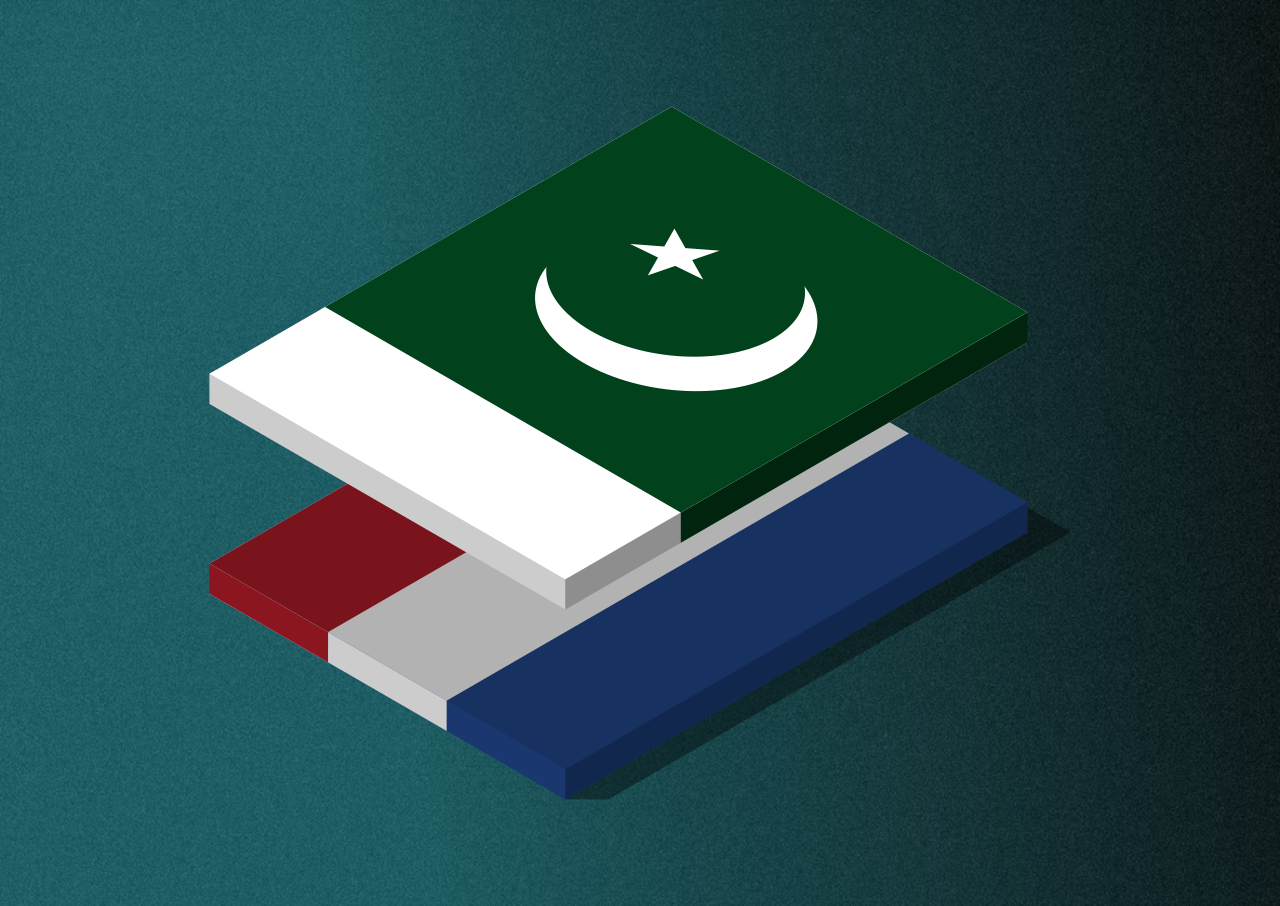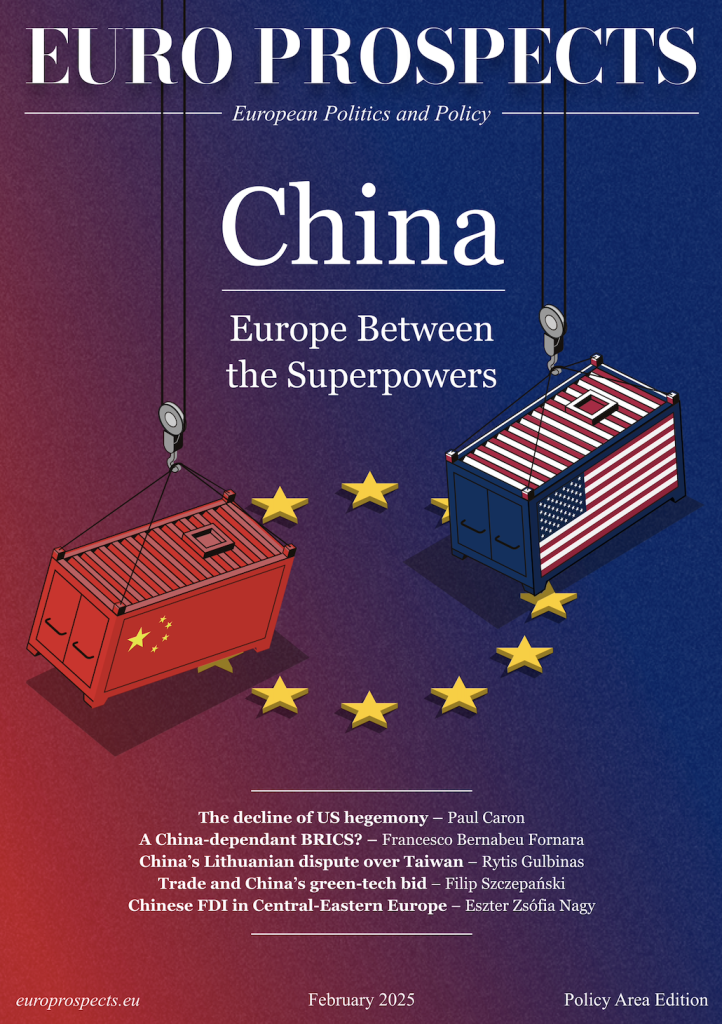
8 min read — Netherlands | Pakistan | Military | Trade
How the Netherlands Became One of the Top Weapon Suppliers to Pakistan

By Naid Makhmudov — International Affairs Correspondent
Edited/Reviewed by: Sam Volkers
August 26, 2025 | 15:30
The recent military crisis between India and Pakistan has drawn global attention—and not without good reason. The possibility of a full-scale war between two nuclear nations can have a devastating effect in South Asia and beyond. But as tensions began to calm following the ceasefire agreement announced on the 10th of May 2025, Indian media started to analyse Pakistan’s main arm suppliers. While China and Türkiye are well known military partners of Pakistan, another country was surprisingly among them: the Netherlands—Pakistan’s second-largest source of arms imports. How did it reach this position?
Recent India-Pakistan crisis
On the 22nd of April 2025, the touristic town of Pahalgam in Indian-administrated Kashmir was the site of a deadly armed attack. Initially, the militant group The Resistance Front (TRF), designated by the Indian government as terrorists and by Pakistani Foreign Minister and Deputy Prime Minister Ishaq Dar as freedom fighters, claimed responsibility. Later, however, the group would soon deny its involvement. Notwithstanding, the Indian government accused Pakistan of supporting the TRF, which many believe is a part of the bigger organization Lashkar-e-Taiba (LeT), the UN-designated terrorist group responsible for the deadly 2008 Mumbai attacks.
After the Pahalgam attack, India launched “Operation Sindoor”, targeting what it called “terrorist bases in Pakistan”. Pakistan responded with “Operation Bunyan al-Marsus” attacking Indian military bases. Most clashes happened in the air, where Pakistan successfully deployed JF-17 fighter jets supplied by China. While navy forces were not actively participating in the conflict, they remained prepared. Unlike the JF-17, Pakistani naval technology—which relies on radar systems and advanced targeting—have components imported from a seemingly unlikely European country: the Netherlands.
Brief history of Dutch-Pakistani relations
The history of Dutch-Pakistani relations dates back to the 17th and 18th centuries, when the Dutch East India Company (VOC) had trading missions in the city of Thatta, Sindh—now a province of Pakistan. Dutch merchants would later reach Karachi, establishing a diplomatic mission in Lahore. In 1948, a year after Pakistan became independent, official diplomatic relations were established. Economic relations were boosted by Dutch companies like Phillips, Unilever and Royal Dutch Shell, which started to operate in Pakistan. From the 1960s until the 2010s, the Netherlands was a meaningful provider of development cooperation funds to Pakistan.
Economic relations between countries have been growing steadily. In 2012, the Netherlands was Pakistan’s 13th trading partner in the world and the 6th in the European Union. Three years later, it became the 10th in the world and 5th in the EU. By 2024, the Dutch would become the second in the EU. When it comes to exports, the main items exported from Pakistan to the Netherlands include textile, rice and sportswear. While Pakistan is not in the list of main economic partners of the Netherlands, and the export to Pakistan includes mostly refined petroleum, pharmaceutical products and machinery, there is another important item: Dutch military exports to Pakistan.
Dutch military exports to Pakistan
Although rarely mentioned, military relations between both countries span decades. The Dutch were among the countries participating in the UN India-Pakistan Observation Mission during the Second Kashmiri war in 1965. During the1970s, the “father of Pakistan’s atomic weapons program” Abdul Qadeer Khan managed to get access to secret information regarding centrifuges at the URENCO Group in Almelo. Later, this information helped Pakistan to produce nuclear weapons. During the Cold War and later especially during the War in Afghanistan, Pakistan was a significant partner to NATO and the Netherlands, being one of the major non-NATO allies. On his visit to Islamabad in 2006, former Dutch Defence Minister Henk Kamp said that “Pakistan’s support to NATO and its forces was vital to bringing peace and stability in Afghanistan”. A year earlier, a NATO Disaster Relief Team, which included Dutch military personnel, was sent to Pakistani Kashmir which had experienced a catastrophic earthquake in 2005.
Military export between the two countries, however, remained limited for many years due to the Netherlands’ cautious arms export policy. The Arms Transfers Database developed by the Stockholm International Peace Research Institute (SIPRI) shows, that the Netherlands started to export weapons to Pakistan since 1994. That year Pakistan received the replenishment ship HNLMS Poolster, which was renamed as Moawin in Pakistan. In 1995, Pakistan received light helicopters SA-316B Alouette-3. In 1997-98, air-search radar DA-08 for modernization of 3 Tariq (Amazon) frigates.
Since 2010s, Pakistan has sought to modernize its naval fleet. As a result, in 2020, Pakistan ordered air-search radar SMART (SMART-S Mk-2 version for 4 MilGem frigates from Türkiye, as noted by SIPRI) and fire-control radars STING for 4 MilGem (Babur) frigates from Türkiye. That same year, Pakistan received Yarmook-class corvettes built in Galați, Romania by the Dutch company Damen Group. In 2022, The Netherlands supplied MCM ships Tripartite. In 2024, Pakistan received the second batch of Yarmook-class corvettes (PNS Yamama). As seen from this data, from 2020 till 2024 (except 2021, when there was no sales) supplies were growing.
The Dutch Ministry of Foreign affairs periodically publishes reports on the export of military goods. According to the latest report from March 2025, among the main types of goods for which an export permit had been issued with the destination being Pakistan in 2014-2024 were: electronic components of a naval aircraft, parts for radar and C3 systems, parts for Sea King helicopters, parts for a minesweeper, parts of an Orion patrol aircraft, patrol vessels and parts for patrol vessels, and mine hunters including accessories. However, for some export permits, Romania, Spain, Türkiye, UAE, USA and Sweden were countries of destination with Pakistan being the final one. These export permits include: parts for Orion patrol aircraft, Radar and C3 systems and parts for radar systems, parts for M113 armoured vehicles, parts and technology for patrol vessels.
According to the latest report by SIPRI “Trends in International Arms Transfers, 2024”, from March 2025, the main recipients of Dutch weapons in 2020–24 were the USA (23% from total exports), Pakistan (20% from total exports) and Mexico (12% from total exports). According to the same database, in 2020-24, the Netherlands was the second main supplier of the weapons to Pakistan (5.5% from total imports), being only behind China (81% from total imports) and ahead of Türkiye (3.8% from total imports). In the period of 2019-2023, Pakistan was the third weapons recipient of the Netherlands. However, military exports have caused fierce debates within the Netherlands, amid worries about regional security and human rights in South Asia. While the Dutch government addresses these issues through strict export license assessments, critics call for greater transparency and tougher regulations.
Despite these concerns, last year Pakistani Chief of the Naval Staff, Admiral Naveed Ashraf met with Commander of the Royal Netherlands Navy, Vice Admiral René Tas at the Royal Netherlands Navy Headquarters. They engaged in talks regarding defence partnerships, cooperation between their naval forces, and maritime security in the region. Admiral Naveed Ashraf highlighted the Pakistani participation in the Combined Maritime Force, 46-nation naval partnership which includes the Netherlands as well. Both sides discussed the importance of strong defence cooperation and military collaboration, including joint exercises and training exchanges. Moreover, Admiral Naveed Ashraf visited the DAMEN Shipyard and De Zeven Provinciën-class, a ship currently being in service to the Dutch Navy.
Indian perspective on Dutch military export to Pakistan
Although the Netherlands has also considered permits for the export of military equipment to India in 2022, the development of military exports to Pakistan has concerned India due to both country’s traditional antagonism. Earlier this year in March, Defence Minister Ruben Brekelmans visited New Delhi and met with Indian Defence Minister Rajnath Singh. Besides discussions related to security, defence cooperation and collaboration in shipbuilding, India has formally asked the Netherlands to refrain from suppling arms to Pakistan. The reason is, according to Singh, that it negatively affects the security in the region. According to India, Pakistan sponsors cross-border terrorism.
After Defence Minister Brekelmans’ visit to India, Indian Foreign Minister Subrahmanyam Jaishankar visited the Netherlands and told the Dutch newspaper De Volkskrant, that for India, the Netherlands is the second largest trade partner in the EU. During his meeting with Dutch officials including Prime Minister Dick Schoof, Defence Minister Brekelmans and Foreign Minister Caspar Veldkamp, the discussions took place regarding the enhancement of cooperation including trade and defence. Prime Minister Schoof also expressed his support for India’s fight against terrorism on X. Although he emphasized that the violence between Pakistan and India should not escalate, he also highlighted that “…In a changing world, it is important for both the Netherlands and India that we can continue to count on one other…”.
Conclusion and Recommendations
The Netherlands has emerged as one of the top arms suppliers to Pakistan due to a combination of historical military cooperation, pragmatic export policies, and strategic economic interests—along with joint cooperation under NATO operations in Afghanistan and within the humanitarian field. As ambassador of the Netherlands to Pakistan Henny de Vries highlighted after the Pakistani floods in 2022, when the Netherlands experienced its own floods in 1953, Pakistani people were shoulder-to-shoulder in their support to the Dutch. Despite the fact, that the percentage of Dutch arms exports is modest (just 5.5% from Pakistan’s total imports), it indicates the diversification of Pakistan’s arms imports and reduction of dependency on China.
The main deliveries of military equipment from the Netherlands to Pakistan include components for radar systems, components for patrol vessels and decommissioned naval vessels. Consequently, it is also fair to assess that the Netherlands’ military supplies do not have strong impact on the regional power balance. Indeed, concerns by India thereof are largely founded on a geopolitical nature, and are not based on the actual threat from the arm sales.
Nevertheless, the Dutch-Pakistani relationship is far from purely military-based: it’s built on cooperation in a wide variance of fields and based on common interests—from humanitarian to economic. As for the current status of the Netherlands as the second top supplier of weapons to Pakistan, it is subject to change as the fluctuating history of arm sales between both countries show.
Recommendations:
- The Netherlands should continue conducting an independent foreign and defense policy, including arms export, while cooperating with both Pakistan and India.
- Dutch-Pakistani bilateral relations have possibility to be strengthened beyond military sphere, in the areas such as economic cooperation and technological exchange.
- The Netherlands needs to further nurture its soft power in Pakistan and India, to promote its foreign policy goals, reduce regional tensions and shape perceptions of its role in South Asia.
- Current academic and policy research on Dutch-Pakistani arm trades and broader relations are quite limited. For comprehensive development of bilaterial relations, more academic and policy research should be encouraged and conducted.
Disclaimer: This article is based on publicly available information from recognized sources, including official reports by the Dutch Ministry of Foreign Affairs, and data from NGOs. This article does not contain any classified material or confidential information.
Disclaimer: While Euro Prospects encourages open and free discourse, the opinions expressed in this article are those of the author(s) and do not necessarily reflect the official policy or views of Euro Prospects or its editorial board.
Write and publish your own article on Euro Prospects
Subscribe to our newsletter – stay informed when we publish articles on pressing European affairs.

